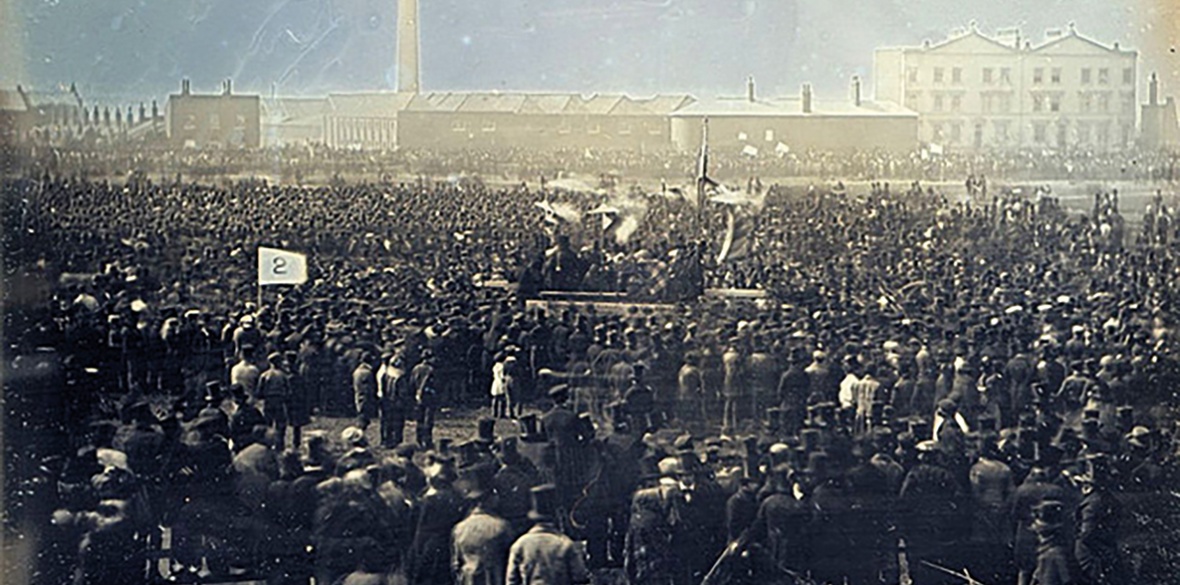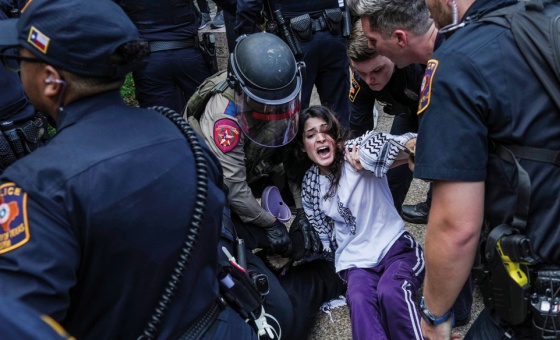This is the last article you can read this month
You can read more article this month
You can read more articles this month
Sorry your limit is up for this month
Reset on:
Please help support the Morning Star by subscribing here
THE huge wave of demonstrations since October 2023 in support of Palestinians and demanding an immediate ceasefire in Gaza has got the government rattled. It’s not just the hundreds of thousands who have marched peacefully week after week in central London but a range of protests across Britain.
The former Labour MP Lord Walney, appointed to the Lords by Boris Johnson, was meant to have produced a report on political violence in 2021. It never appeared, but recently Walney has been demanding restrictions and bans on protests he doesn’t agree with. The Tories’ “counter-extremism tsar” Robin Simcox has also weighed in with calls for bans. He was appointed by Priti Patel and was formerly a cheerleader for Donald Trump.
Finally Michael Gove has taken it upon himself to produce a little list of organisations he thinks are extremist. The list has a couple of fascist groups which are certainly extreme but also tiny, and several Muslim organisations because Gove, in reaction to Palestinian protest, is determined to promote Islamophobia.
Government reaction to protest it can barely understand and certainly doesn’t agree with, and attempts to ban and restrict it, are nothing new.
One of the Six Acts, which were passed in December 1819 after Peterloo, was the Seditious Meetings Act.
Under the Act all meetings of more than 50 people were not allowed. This included any meeting: “for the purpose … of deliberating upon any public grievance, or upon any matter or thing relating to any trade, manufacture, business, or profession, or upon any matter in church or state.”
The only exception were meetings called by an “authorised official.” In addition a meeting of people in one specific area could be called provided permission was given by a justice of the peace. He of course required six days’ notice. At such meetings no banners, flags or emblems of any sort were allowed.
While the Act was repealed in 1824, a related limit of no more than 49 delegates at any representative gathering remained in place through the Chartist period up to 1848.
It took many years of political organising by the trade unions, the Chartists and others to get rid of these restrictions.
Thirty years on and the government feared revolution in Britain in the year of revolutions across Europe, 1848.
The actual machinery of government was very small indeed, but the forces it could command were considerable as were the laws it had to deal with threats to order.
The Treason Felony Act dates from 1848 when it brought together several earlier Acts and replaced the death sentence for treason with a felony — in practice at the time transportation to Australia.
The Act was discussed in the House of Commons on the evening of April 10 1848, the day of a huge protest on Kennington Common and passed within 24 hours despite concerns that a clause on “open and advised” speaking could lead to a treason sentence for political dissent.
The state had reason to do this. Juries were reluctant to convict where the death sentence was involved and in the revolutionary year of 1848 the state wanted convictions to frustrate any attempts at revolution. Hence the first two people to be convicted under the newly amended Act were the Irish Republican Chartist John Mitchel and the black leader of London Chartism William Cuffay.
A reminder that faced with protest, the state can and will try to hit back. Determination and organisation to keep protesting means that 175 years after 1848 the state is still trying to find ways to frustrate protest.
Keith Flett is a socialist historian.









